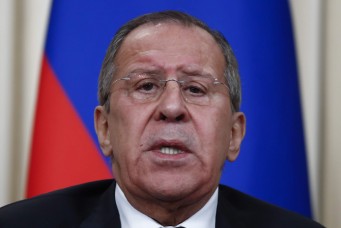Libya’s Southern Rivalries
Rival factions in Libya have allied themselves with groups in the south, intensifying local conflicts and disrupting security in the border zone.

Since the fall of Moammar Gaddafi’s regime, changes in tribal allegiances have accompanied the fight over resources and power across an intensely fractured Libya. These local conflicts have now been cast into the divisive, larger political context in Libya, with its two governments, parliaments, assorted fighting forces and ideologies.
Gaddafi governed with divide and rule tactics, pitting local tribes against each other, like the powerful Arab Awlad Suleiman clan in Sebha, the largest city in Fezzan province, against the Tebu. During the 2011 revolution, the Tebu cast their lot with the rebellion and formed a fighting force along the length of the southern border, while the other indigenous and semi-nomadic desert tribe, the Tuareg, allied themselves with Gaddafi, who promised them civil rights in return. Despite fighting on opposing sides, the Tuareg and Tebu never turned their weapons on each other. And in 2012, during Libya’s post-revolutionary national elections, both communities, living side-by-side in Sebha’s impoverished Tuyuri neighborhood, were exuberant in casting votes for future power in a new Libya. But soon after the revolution, turf wars broke out over the lucrative border trade between Arab tribes and the Tebu in Sebha, killing more than 150 people in March 2012, and another 150 in January 2014.
In today’s violent clashes between tribes, revolutionary alignments have fallen by the wayside. The Tebu, initially awarded control of the southern borders by the National Transitional Council, and the Zintan, a tribe from the northwest that fought against Gaddafi and is now aligned with the Tobruk-based “Dignity” government, together moved to safeguard the Sharara oil field after the revolution, cutting the Tuareg out of their share. The Misratan’s “Third Force” is now militarily present in Sebha to support their self-proclaimed allies and traditional Arab partners, the Awlad Suleiman, in their fight to seize back the checkpoints and control of the borders from the Tebu. The Misratans have also teamed up with new, unlikely allies, the Tuareg, for control of the Sharara and surrounding desert near Algeria and Niger. A military commander in Sebha proclaimed, “We are here to save the South”—presumably from local tribal warfare over lucrative smuggling routes for humans, gasoline, food, weapons, drugs, and alcohol, as well as over natural resources like Sharara’s oil.
On November 5, Tuareg fighters violently wrested control of Sharara from a weakened Zintani and Tebu security force that were too distracted with conflicts in the north and in nearby Ubari to put up much of a fight. Misratan military forces then moved in, installing Tuareg fighters—both from Libya, as well as those returned from the war in Mali—to secure the perimeter. This takeover stopped production for Repsol, the Libyan-Spanish oil company, which previously produced 340,000 barrels of crude oil per day (bpd). Subsequently, the Zintan blocked a valve on the supply pipeline hundreds of kilometers closer to the sea. Another nearby oil field, Al-Fil, has also been closed amid electrical problems and security concerns, leaving the bulk of Libya’s remaining production to fields in the west. After tumbling from its post-revolutionary boom of 1.4 million bpd, Libya’s oil production has risen again this year to 800,000 bpd, and accounts for 95 percent of Libya’s economy.
Libya’s two governments have duplicate oil ministers and National Oil Corporation (NOC) heads. The General National Congress (GNC) minister was barred from the OPEC meeting in Vienna in late November in favor of the minister from the Tobruk-based government, which is recognized by the international community. Oil profits are evenly distributed through Libya’s Central Bank, which remains autonomous—for now. The situation remains too uncertain for most international oil investors, who have been following Libya’s chaos from the sidelines, like much of the international community. But despite the spiraling violence, energy analyst Richard Mallinson says, “What seems to happen is that all the various factions are still able to draw government salary payments, whatever side they are on, and thus have an incentive to allow oil production to continue, so the revenue can continue. Then the victorious would take it all.”
Tens of kilometers east of Sharara, the fighting in the town of Ubari has intensified over the past month, after conflict broke out between the Tuareg and Tebu in September, breaking the longstanding truce they call the “midi-midi.” Many suspect external forces, like the Misratans, with local allies, and their economic and political motivations at play to take control of the lucrative border trade. The Tuareg, in control of the nearby Akakus mountaintop, lob heavy artillery into the town. Intelligence officers from Misrata are camped out in the nearby town of Germa, waiting to enter Ubari and “bring peace,” as one fighter said. The Red Crescent confirms dozens have been killed and wounded in Ubari, and the United Nations High Commissioner for Refugees (UNHCR) estimates that 11,000 people, mostly families, have fled Ubari to Sebha, Murzuq, or Ghat, on the Algerian border.
Community peace talks have stalled in this polarized environment, and many Tebu and some Libyan Tuareg blame the Misratans for instigating and sustaining the bloodshed despite community protests. In turn, the Misratans and their Tuareg allies claim that the Tebu fighters are mercenaries from Chad, backed by the Tobruk-based government. One Tuareg advisor, Issa Senussi, in a meeting with a Misratan military commander, advocated the expulsion of the Tebu from Ubari for there to be peace.
Meanwhile, the international community, in particular the United States and France, are alarmed by evidence that the Libyan Tuareg are helped by their kin returning from the Malian war; Islamist extremist groups, most notably the Border Guards Brigade 315, led by Ahmed Al-Ansari, who is related to the former head of the Malian Islamist group Ansar Dine; and the Misratans, loosely affiliated with Ansar Al-Sharia and their fight in the northeast. Meanwhile, Al-Qaeda in the Magreb (AQIM) is also rumored to be present in Ubari.
In the absence of a stable Libyan government, rule of law, and working border guard, the United States has opened two military bases in neighboring Niger to run surveillance flights, claiming they have evidence of Islamic State training camps in the northeast, and French troops have moved closer to Libya’s border. Their focus in Libya today is primarily countering terrorism. Now that the Misratans and Tuareg control much of southwest Libya, this heightens concerns that a smuggling corridor for fighters and weapons from there to the northeast is becoming closer to reality, and urgent priority for western nations.
This article is reprinted with permission from Sada. It can be accessed online at: http://carnegieendowment.org/sada/2014/12/10/libya-s-southern-rivalries/hwb6
Rebecca Murray is a Middle East-based journalist, and regular contributor to Al Jazeera Englishand Middle East Eye. She is a contributing author to the upcoming book The Libyan Revolution and Its Aftermath.




